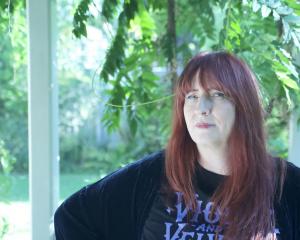
QUANTUM THEORY CANNOT HURT YOU: A Guide To The Universe
Marcus Chown
Faber and Faber, $40
Review by Clive Trotman
It's true - you can't judge a book by its cover. I'll admit to a quiet groan at first sight; surely science can't be dumbed down that far? The content, though, was an astonishing surprise.
Only half the book is on quantum theory. The other half is about relativity.
Both theories were the products of hard thinking in the new physics of early last century, including of course the works of New Zealanders Ernest Rutherford and Ernest Marsden (and much later, Roy Kerr).
Quantum theory is concerned with the scale of the atom, and much smaller, while relativity explains mysteries on the scale of the universe.
The two remain difficult to link together, but a way of looking at it is that unpredictable things happening on a subatomic scale are blurred out in the large lumps of matter making up the predictable universe.
But there's much more to it. Compared with the treatments by other popular-science writers, the author raises us to a considerably higher plane of detail about the quirkiness of subatomic particles and the strange distortions of space-time.
He has succeeded through a quantum leap, so to speak, in lucidity, expressing opaque concepts with a unique clarity.
On atomic structure: "Because of the Heisenberg uncertainty principle, there is a minimum-sized 'box' in which an electron can be squeezed by the gravity of a white dwarf [star]. However, because of the Pauli exclusion principle, each electron demands a box to itself. These two effects . . . give an apparently flimsy gas of electrons the necessary 'stiffness' to resist being squeezed by a white dwarf's immense gravity."
On relativity: "The speed of light, recall, plays the role of infinite speed in our Universe. Just as it would take an infinite amount of energy to accelerate a body to infinite speed, it would take an infinite amount of energy to push one to light speed.
"In other words . . . it would take more energy than is contained in the Universe."
Beautiful.
A century after Einstein's great papers, when books about his work (often trading on his name) are impacting like cosmic rays around us, Marcus Chown stands out as a master of vivid explanation.
Yes, it's all been said before, many times, but as the author says himself of Einstein, sometimes it takes a genius to state the obvious.
As so often when an author likes footnotes, these tend to be more interesting than the text and ought to be woven in, rather than winkled out as diversions.
A good example is the further explanation of the famous twin paradox (travel to a star and back at nearly the speed of light and you age much less than your twin on Earth).
The excellent glossary, at 28 pages, might nevertheless be just a shade more than society requires.
But above all, please consign that cover to the nearest black hole.
- Clive Trotman is a Dunedin science writer and technical arbitrator.












